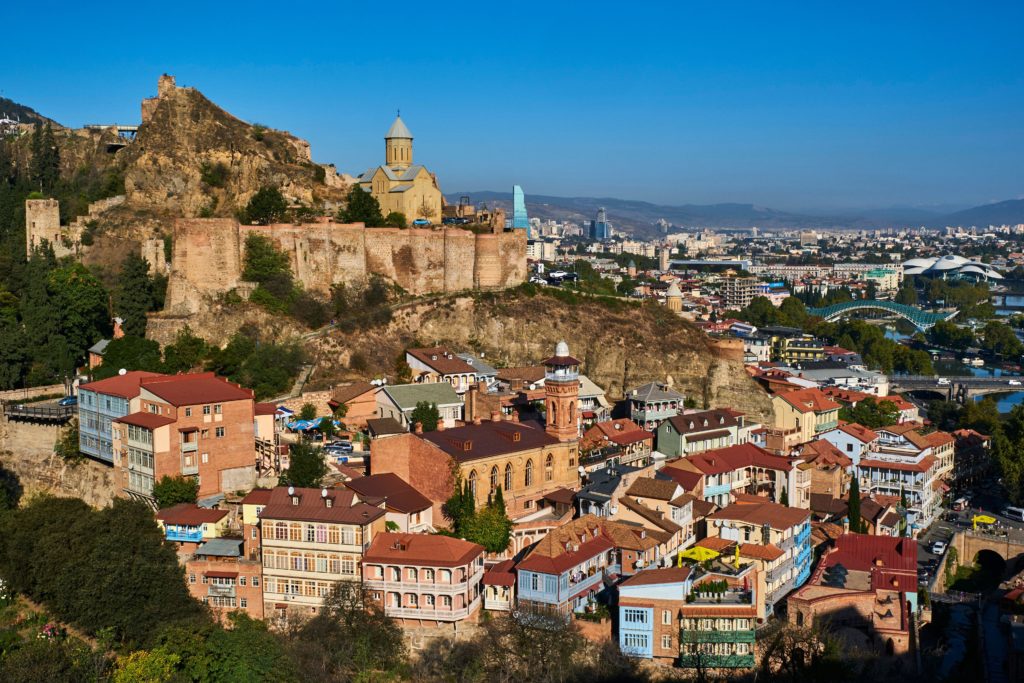TBILISI
Georgia’s economic recovery continued to gather pace as the country eased the majority of the restrictions it had imposed to curb the coronavirus pandemic, businesses reopened and tourists tentatively started to return.
Gross domestic product (GDP) grew by 11.5 percent year-on-year in January-May 2021 after contracting 5.4 percent in the same period last year, the National Statistics office said. In May alone the economy expanded by 25.8 percent, compared with a 13.5 percent contraction a year ago. Growth was recorded in all sectors of the economy.
Last month, officials said that Georgia’s economy might grow faster than initially expected this year after encouraging growth figures in the first four months of 2021 and a rise in exports suggested it was on the path to recovery.
The ex-Soviet country’s GDP grew by 8.1 percent year-on-year in January-April 2021 after contracting 3.6 percent in the same period last year. The government had initially forecast 4 percent growth this year, but officials said that the growth could exceed 7 to 8 percent.
Over the last decade, Georgia became the post-Soviet region’s premier international tourist destination, something on which a huge part of the country’s economy has come to rely. Over nine million international travellers visited the country in 2019, up from two million in 2010, bringing in – officially – $3 billion in revenue. However, much of the tourism economy is estimated to be in cash, off-the-books transactions.
The decision to close borders as the pandemic spread affected the tourism sector dramatically. In a further blow to the industry, the country implemented a series of stringent nationwide lockdown measures, including a 9 p.m. curfew and a ban on large gatherings. But many restrictions were lifted in April and May and the curfew moved to 11 p.m. The government decided to lift the curfew from July 1.
Georgia’s finance minister said last month that the pandemic cost the state budget 7.2 billion lari ($2.3 billion) in 2020 and in the first four months of this year. The tax deficit was 1.9 billion lari.
But despite serious challenges, the economy started to show its first solid signs of recovery in April, when it expanded by a record 44.8 percent, compared with a 16.6 percent contraction a year ago, with a growth recorded in all sectors of the economy except the mining industry.
Foreign trade also showed positive signs, with exports increasing 45 percent year-on-year in May to $340 million. Georgia’s foreign trade turnover increased by 18.2 percent to 5 billion dollars.
The World Bank said in June that Georgia’s economy was projected to recover in 2021, growing by 6 percent, with the key baseline assumption that there were no further severe waves of COVID-19 infections that necessitate additional lockdowns and ongoing political impasse is resolved. The recovery will be supported by fiscal stimulus in the form of accelerated capital spending, tax deferrals, accelerated VAT refunds, and targeted support for the most affected businesses, as well as higher social spending.
Under a baseline scenario in which no third wave of infections materialises and a significant share of the population is vaccinated by 2022, economic growth could recover to 5.0 percent in 2022 and 2023.
According to the International Monetary Fund forecast, Georgia’s GDP is projected to grow 3.5 percent in 2021 and 5.8 percent in 2022.

